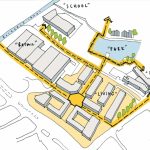Sector - Health & Safety
Cost-benefit calculations: How sound are they?

When done well, cost-benefit analyses are an effective tool, which can be used to guide decision-makers about whether to invest in a new project or infrastructure programme. However, it is important to follow best practice and ensure the analysis is robust and accurate.
What are cost-benefit calculations?
Commercial enterprises use return on investment (RoI) as a method of assessing and comparing the value of different projects / products to their business. Many Government and infrastructure projects are not intended to make a profit – so how can different projects be assessed and compared? In the public sector, the common approach is cost-benefit analysis, where the expected benefits of the project have to be converted into cash equivalents. These cash equivalents can then be factored against the project costs. If competing projects are assessed using the same methodology against the same criteria, decision-makers have an objective measure to support the project selection or rejection.
Cost-benefit calculations usually involve an assessment of the long-term benefits of a project, alongside any associated costs. The costs are factored by the benefits to provide a cost-benefit ratio. Projects with a ratio below a certain value would not normally get the funding to go ahead. However, it may be left to the client or sponsor to decide what ratio is acceptable. Clearly, if a client or sponsor wishes to compare a number of schemes, a common approach is needed to cost-benefit analysis. The key benefits to be considered in the analysis should be agreed by key stakeholders, for example, journey time reduction and reduction in pollution levels, as should the way these benefits are valued.
Are cost-benefit calculations effective?
Recent media reports about the Stonehenge tunnel project highlight the problems that may arise if cost-benefit calculations are not well grounded. In this case, the cost-benefit assessment was apparently based primarily on one factor – the amount of money that members of the public would be willing to pay to have the site’s existing road removed. The data used in the analysis also seems to be based solely opinion-based, which raises more questions than it answers. This has raised doubts about the robustness of the approach. With the vast majority of the benefits (73 per cent of the total cost benefits) based on public opinion, one has to ask how the “value” was assessed:
- How many people were asked?
- Over what period were they asked?
- What was the demography of those asked? (Where did they live? What was their reason for travel? Were they regular or occasional travellers through the area? What’s the value of goods they were transporting? Etc)
- When the public were surveyed, what context and background information was available to them?
There are many questions that could be asked about the value of a project, and the way a question is asked is also significant. For example, a simple open question such as “What would you pay to have the road removed from the World Heritage Site?” is different from asking the same question but with multiple choice answers, each choice covering a different range of costs.
What can make cost-benefit calculations bias?
A stakeholder analysis may play a significant part in the cost-benefit analysis. It’s important to consider who exactly the key stakeholders are and what they see as the key benefits. Other questions to consider are whether there are direct and indirect benefits, including benefits that must be delivered, and others that are nice-to-haves. A freight-haulier will probably put high value on journey time improvements, whilst some local residents may put a higher value on reductions in noise levels and air pollution. How the potential benefits are measured and then how those benefits are converted to cash equivalents is therefore likely to be a compromise between different stakeholders’ views, in order to have an approach that is accepted by the sponsor and key stakeholders.
There are risks and uncertainties to be taken into account as well, and it’s important to consider how certain the cost estimate is. Author and mega project expert, Bent Flyvbjerg, has spoken about a culture of ‘optimism bias’ in the project management industry, which can cause managers to sub-consciously over-estimate benefits, and understate costs. What are the risks in delivering the project? These may affect both the time required and the cost to deliver it. What assumptions have been made when assessing benefits – and potential disadvantages? For instance, in the case of the Stonehenge scheme, which is one of eight proposed schemes along the A303 corridor, is it to be assumed that some, all or none of the other schemes are also funded and delivered in the next few years?
How can cost-benefit calculations be carried out effectively?
Conducting a thorough stakeholder analysis at the outset of a project is key to revealing the full range of predicted benefits. A clear and consistent strategy should then be applied to determine exactly how they should be taken into account. Where individual projects form part of a larger scheme, it may make sense to adopt an integrated approach to cost calculations, rather than performing them individually. For example, the Stonehenge tunnel project could bring far-reaching benefits for people living and working across the south west and a failure to recognise this could be giving investors and project partners a misleading view.
A comprehensive and objective approach to cost-benefit calculations, will ensure that all stakeholders have a sound understanding of the project’s true potential. This in turn will increase their decision-making power and help to drive value from any potential investments.
Article submitted by Graham Ramsden, Principal Risk Analyst, Equib.
Related Articles
More Health & Safety Features
- Construction workers face the highest risk of fatality
13 Aug 25
Construction workers face the highest risk of fatality, with one in two Brits saying HSE training is skipped due to time pressure.
- A new chapter for the Building Safety Regulator
12 Aug 25
A package of potentially significant reforms to the makeup of the Building Safety Regulator have been announced.
- Radical action to speed up removal of unsafe cladding
18 Dec 24
The government has set out tough new targets to fix unsafe buildings in England.






